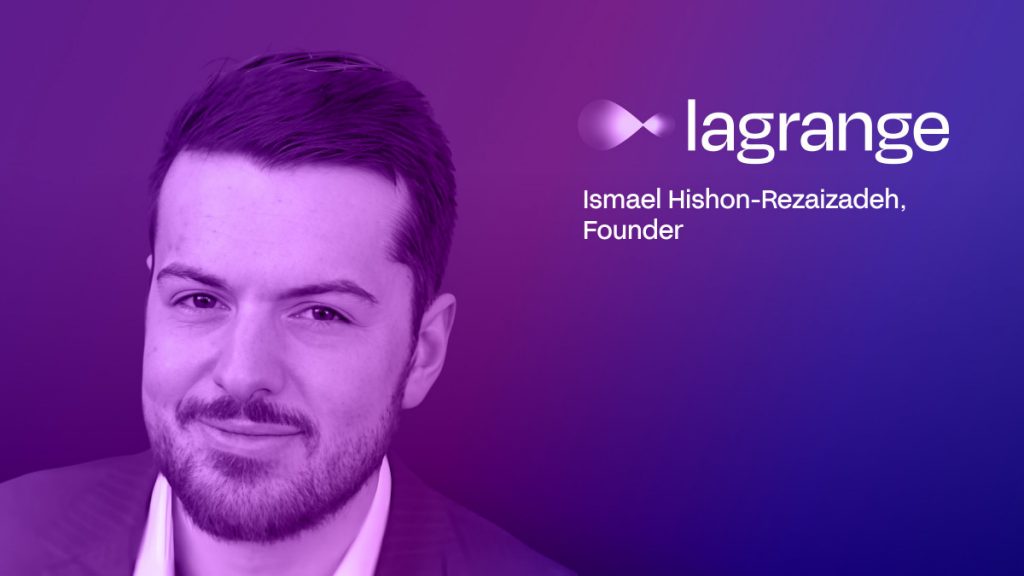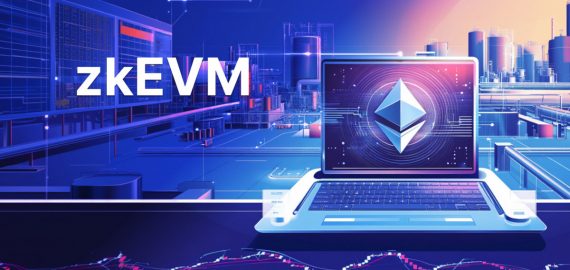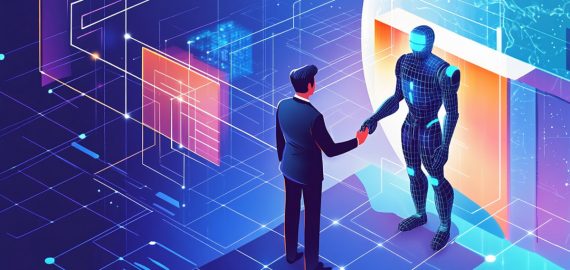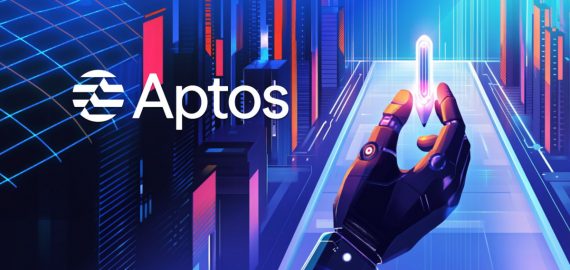From DeFi to Rollups, the Technology Unlocking Scalable and Verifiable Blockchain Computation


In Brief
What if smart contracts could process data like databases? Lagrange is making it possible with SQL-based zero-knowledge proofs, revolutionizing on-chain computations and unlocking new potential in DeFi and blockchain scalability.

What if smart contracts could process data as seamlessly as databases? Lagrange is turning this idea into reality with SQL-based zero-knowledge proofs, offering developers an efficient way to run verifiable computations on-chain. This innovation is opening doors to entirely new possibilities in DeFi and blockchain scalability.
We spoke with Ismael Hishon-Rezaizadeh, Founder and CEO of Lagrange, about his journey from Web2 investing to building modern Web3 infrastructure. Here’s how his team is reshaping the blockchain development experience.
Could you start by giving a small introduction about your personal journey to Web3?
I was a Web2 investor before founding Lagrange. I worked for a small San Francisco-based venture fund called Renegade Partners. They had raised $100 million and were in the process of raising it a second time, and it ended up being about $110 million. I was there for about two years, primarily doing early-stage B2B software and payment infrastructure investing. Before that, I was an engineer working on DeFi engineering for a large insurance company. After leaving the venture, I founded Lagrange.
Early on, we were looking at the limitations in developer patterns that engineers could build with on-chain. One of the areas we identified was the lack of efficient zero-knowledge tools.
How does Lagrange’s SQL-based ZK processor differ from traditional ZK-proof systems in scalability and functionality?
It’s a way to prove SQL-based computation over blockchain data. If you want to run a query that you want to verifiably consume in your contract—such as a moving average of price or applied volatility over historical data—you would need a zero-knowledge solution that could do that efficiently with a good developer experience. We let you write your computation in SQL, which is a query-based language common for database operations and data computation. We’re able to prove those queries in zero-knowledge so that your contracts can use them on-chain.
How does this SQL query interface simplify developer workflows compared to creating custom circuits?
It lets you specify your computation in an easy-to-use, familiar language rather than writing circuits by hand. You write the query in SQL, which is generally much simpler to use when you want to manipulate data compared to writing in a different language.
Can you elaborate on the other solutions that Lagrange provides?
We build two core things. The first is a decentralized prover network, and the second is a coprocessor. The decentralized prover network is a network where we can generate zero-knowledge proofs in a centralized manner using a large number of operators participating in the proof generation process.
We have several large institutional operators like Coinbase, Kraken, OKX, P2P, Figment, Luganodes, Infstones, and Black Sand who participate by lending computational resources to the network. These proofs are then generated and delivered to end users.
The big announcement we have is about using our network for generating proofs for roll-ups on platforms like Caldera and Altair.
How does Lagrange’s technology enable applications to scale across multiple blockchains?
We don’t really focus too much on cross-chain work. We do have an older product that we built for state proofs that we sell across protocols, but it’s not a major focus of ours across chains.
What are the implications of Lagrange’s coprocessor on Ethereum’s long-term scalability?
It really opens up the design space for developers by providing access to verifiable computation at a large scale. When you can compute over historical data extensively, it allows you to build on-chain things that were previously impossible. In DeFi, we rely on price and volatility feeds, but with a coprocessor like ours, you can remove many of those dependencies and simply use on-chain data.
What inspired the focus on ultra-scalable queries, and what unique opportunities does it unlock?
What inspired it was the limitations in developing on-chain smart contracts. There’s not really a way for your contract to access historical data. Previously, developers had to use inefficient design patterns to accumulate things in the state, which was expensive, gas-inefficient, and not necessarily secure. Being able to verifiably query historical data from a contract really opens up the design space of what you can build.
Do you mostly work with developers in the USA, Europe, or APAC region?
We are quite global. I’m based in the US, and a lot of our team is based in Europe, so there’s obviously a regional bias towards those geographies. But we really try to be as global as possible. I attended DevCon in Bangkok, for example, which was a great conference.
How does your system manage potential latency issues in distributed proof generation?
We are able to generate proofs in a highly parallelizable fashion. We have a large network of operators where we can effectively distribute computation and then bring it back together. This allows us to go increasingly parallel to reduce proof generation time. Additionally, ZK technology is getting faster, and our proofing is improving, which will naturally reduce latency.
Can you share insights on partnerships with protocols like Arbitrum, BASE, and other projects?
We like to think of ourselves as a credibly neutral company. We don’t turn down people who want to use the proofs we generate. We love working with as many systems and products as possible. We’ve integrated our coprocessor with BASE, Arbitrum, and others. We’re also actively working with ZK rollups to generate validity proofs, and we’ll be announcing partnerships with Caldera and Altair Layer 2 rollup service ecosystems.
What’s next for Lagrange after the mainnet launch, and how do you plan to maintain innovation?
We have a large research team led by our chief scientist, Charalampos (Babis) Papamanthou, who chairs the cryptography department at Yale. Another researcher, Dimitris Papadopoulo, is a professor at HKUST. We plan to alter our underlying proofing system as the state of the art advances. We’re exploring hardware acceleration, including ASIC chips, GPUs, and Fabric’s VPUs.
What innovations do you anticipate in ZK-proof technology and the broader blockchain industry?
ZK is getting faster across the board, with improvements in hardware acceleration and underlying proofing systems. We’re excited about working with small fields like Mersenne 31 and Goldilocks, which have made STARKs faster. We’re seeing drops in recursion time, hardware acceleration work with groups like Fabric and Ingonyama, and innovations in higher-rarity recursion that allow for more parallel computation.
Disclaimer
In line with the Trust Project guidelines, please note that the information provided on this page is not intended to be and should not be interpreted as legal, tax, investment, financial, or any other form of advice. It is important to only invest what you can afford to lose and to seek independent financial advice if you have any doubts. For further information, we suggest referring to the terms and conditions as well as the help and support pages provided by the issuer or advertiser. MetaversePost is committed to accurate, unbiased reporting, but market conditions are subject to change without notice.
About The Author
Victoria is a writer on a variety of technology topics including Web3.0, AI and cryptocurrencies. Her extensive experience allows her to write insightful articles for the wider audience.
More articles

Victoria is a writer on a variety of technology topics including Web3.0, AI and cryptocurrencies. Her extensive experience allows her to write insightful articles for the wider audience.

















































